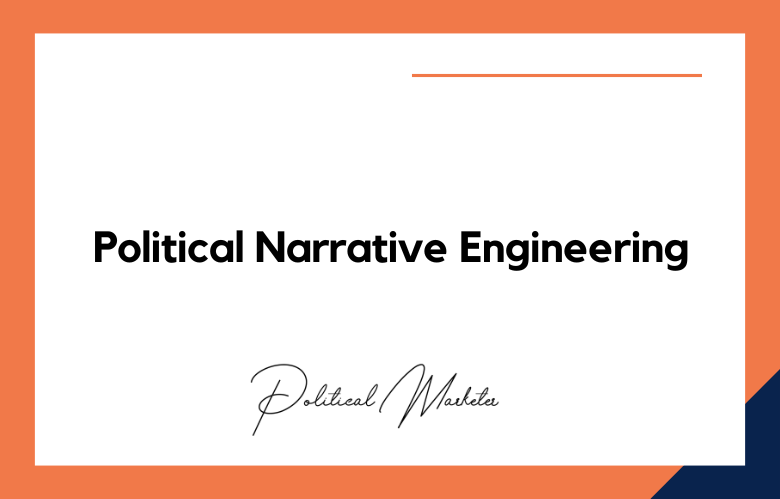Technology has penetrated every aspect of our lives, and politics is no exception. Political campaigns have also realized the potential of new technologies in wooing voters.
Artificial Intelligence (AI), adopted by various industries, is now used to understand voter sentiment. Voter sentiment analysis can help political parties gauge the direction their campaigns should take.
We will examine the importance of AI-driven voter sentiment analysis for political campaigns, exploring how AI is used to analyze voter sentiment and the benefits political parties can gain from such research.
Revolutionizing Political Campaigns with AI-Driven Voter Sentiment Analysis
Political campaigns have always been highly contested and competitive. Candidates and their teams leave no stone unturned in their attempt to gain the favor of the voters they hope will support them in the upcoming elections.
Understanding the voter sentiment toward the candidate’s policies, communication strategy, and image is a critical factor in this struggle.
The good news is that with the advent of Artificial Intelligence (AI), campaigns now have a powerful toolset to analyze voter sentiment and craft a data-driven strategy to mobilize their movement.
We will explore how AI-driven voter sentiment analysis revolutionizes political campaigns and why political campaigns must invest in technology.
Harnessing the Power of AI for Political Campaigns: Voter Sentiment Analysis
Artificial Intelligence (AI) has recently been a topic of interest in politics. Governments, political parties, and candidates have leveraged AI to gain insights into voter preferences and opinions.
One of the most crucial aspects of political campaigning is understanding voters’ sentiments.
Knowing how people feel about a particular candidate or political issue can help political campaign managers tailor their strategies and messaging accordingly. This post will explore how AI-powered sentiment analysis can revolutionize political campaigning.
Understanding Sentiment Analysis and its Importance in Political Campaigning
Sentiment analysis is the practice of automatically identifying opinions and emotions in text data. It involves using natural language processing (NLP) techniques to analyze the attitudes and feelings expressed by people in social media posts, news articles, online reviews, and other forms of text data.
Sentiment analysis can help managers understand voters’ feelings about issues, candidates, and political parties in political campaigning.
By analyzing large volumes of text data, campaign managers can identify trends, patterns, and sentiment for a particular issue or candidate. This data can then be used to make informed decisions about the campaign strategy.
AI-driven Sentiment Analysis for Political Campaigning
AI-powered sentiment analysis offers several advantages over traditional methods. First, AI algorithms can analyze vast amounts of data in a fraction of the time it would take humans.
This means that campaign managers can gain insights into voter sentiments in real-time, allowing them to adjust their campaign strategy accordingly. AI algorithms can detect subtle nuances in language, including sarcasm and irony, that human analysts can miss.
Unveiling AI-Driven Voter Sentiment Analysis for Political Campaigns
Artificial intelligence is no longer a buzzword for the future. It has revolutionized how we process information and opened up exciting avenues in diverse fields.
One field where AI is gradually gaining recognition is politics. With political campaigns becoming increasingly competitive, political parties leverage AI solutions to gain an edge over their opponents.
One such solution is AI-driven voter Sentiment Analysis, which quickly explains how voters feel about particular candidates and issues. In this article, we will explore this innovative technology and see how it transforms political campaigns.
Applications of AI-powered Sentiment Analysis in Political Campaigning
AI-powered sentiment analysis can be applied in several ways to improve political campaigns. Here are some examples:
Understanding voter attitudes towards specific issues:
By analyzing social media posts and news articles, campaign managers can understand voters’ feelings on particular issues such as healthcare, education, or immigration.
Identifying key opinion leaders:
Sentiment analysis can help campaign managers identify individuals with significant influence on public opinion. These individuals can then be targeted with specific political messaging to help sway public opinion in favor of the candidate or party.
Monitoring the competition:
Campaign managers can use sentiment analysis to track voters’ opinions about their competitors. This data can be used to adjust the campaign strategy, respond to attacks, and identify areas of weakness in the opposition.
Challenges and Limitations of AI-powered Sentiment Analysis in Political Campaigning
AI-powered sentiment analysis has its challenges and limitations. Here are some issues that campaign managers need to consider:
Data Quality:
AI algorithms rely on high-quality data to provide accurate insights. Low-quality data, such as fake news or misleading social media posts, can negatively impact the accuracy of sentiment analysis.
Biased Algorithms:
AI algorithms are only as unbiased as the data they are trained on. Campaign managers need to be mindful of the algorithms they use and ensure that they are not perpetuating any biases in their campaign messaging.
Privacy Concerns:
The use of AI-powered sentiment analysis raises significant privacy concerns. Campaign managers need to ensure that the data they are analyzing is obtained ethically and that individuals’ privacy is protected.
Best Practices for AI-Driven Voter Sentiment Analysis for Political Campaigns
Understanding Voter Sentiment
Voter sentiment refers to voters’ collective opinions and attitudes towards a particular issue, candidate, or party.
During an election campaign, voter sentiment can fluctuate depending on socioeconomic issues, political scandals, and emotional appeals.
AI-driven voter sentiment analysis uses advanced machine learning technologies to analyze data from various sources, such as social media, political news feeds, and sentiment surveys, to understand voter opinions toward a particular candidate or party.
Benefits to Political Parties
Political parties need to win the hearts and minds of voters. Understanding voter sentiment analysis can help political parties understand voters’ views and create targeted messages that resonate with voters.
For instance, they can create targeted messages that appeal to a particular age group, gender, or location. Political parties can also use the information to improve their campaign strategies and identify probable swing voters, which could help them gain a competitive edge.
Campaign Optimization
AI-driven sentiment analysis helps political parties measure the effectiveness of their campaign strategies. By analyzing voter sentiment, AI can identify trends and patterns, allowing political parties to optimize their campaign messages.
For instance, if analysis reveals that voters are more concerned about a particular issue, political parties can adjust their messages to highlight their stance.
Real-Time Voter Sentiment Analysis
Traditionally, political campaigns have relied on polls and surveys to understand voter opinions. However, these methods are time-consuming and need to be more accurate.
With AI-driven sentiment analysis, political parties can get real-time feedback on voter sentiment towards their parties’ messaging. This real-time feedback can help them identify potential issues with their messaging early and adjust it accordingly.
Ethical Concerns
As more political parties adopt AI-driven voter sentiment analysis, growing concerns exist about how the data is collected, analyzed, and used.
Some critics argue that it could be used to target specific demographic groups, violating privacy laws and potentially influencing the outcome of the election. As such, political parties must be transparent in collecting and using voter data for sentiment analysis.
Conclusion:
In conclusion, AI-driven voter sentiment analysis is a powerful tool to help political parties understand voter opinion, optimize their campaign strategies, and create targeted messages.
Real-time voter feedback provided by AI sentiment analysis can help political parties respond to voter concerns and adapt their messages accordingly.
However, the ethical concerns surrounding voter data collection and analysis should be addressed appropriately to safeguard citizens’ privacy and maintain the integrity of democratic processes.
AI-Driven Voter Sentiment Analysis for Political Campaigns: FAQs
What Is AI-Driven Voter Sentiment Analysis In Political Campaigns?
It is the use of artificial intelligence to interpret public emotions, attitudes, and opinions by analyzing digital data to guide campaign strategies.
How Does Sentiment Analysis Work Using AI?
AI processes language from text, voice, or video using machine learning and natural language processing (NLP) to classify voter sentiment as positive, negative, or neutral.
Can AI Differentiate Between Positive, Negative, And Neutral Sentiments?
Yes, advanced AI models can detect sentiment tones with high accuracy by evaluating keywords, sentence structure, emojis, and context.
Why Is Sentiment Analysis Important For Political Campaigns?
It helps political teams understand public mood, tailor messaging, respond to concerns, and track voter reactions in real-time.
How Accurate Is AI In Interpreting Voter Emotions?
While not perfect, AI can achieve over 80% accuracy in sentiment classification with well-trained datasets, especially for large-scale analysis.
What Sources Of Data Are Used For Voter Sentiment Analysis?
Data is typically pulled from social media, forums, news articles, emails, chatbots, and survey responses.
How Does Real-Time Sentiment Tracking Benefit Political Strategy?
It allows campaigns to respond immediately to crises, capitalize on momentum, and shift narratives based on public reaction.
Can Sentiment Analysis Predict Election Outcomes?
It can offer early indicators and trends but should be combined with polling, demographic data, and voter turnout models for accuracy.
What Role Does Natural Language Processing (NLP) Play In Sentiment Analysis?
NLP is the core of sentiment analysis, allowing AI to interpret context, tone, and meaning in human language at scale.
Is Sentiment Analysis Applicable To Regional Or Local Elections?
Yes, localized sentiment analysis helps understand constituency-specific issues, grievances, and public opinion trends.
How Do Political Teams Act On Sentiment Data Insights?
They revise messaging, adjust policy focus, correct misinformation, and allocate resources to regions with negative sentiment.
Can Sentiment Analysis Identify Voter Issue Priorities?
Absolutely. It highlights trending topics and policy areas that matter most to voters based on conversation volume and sentiment strength.
What Tools Are Used For AI-Powered Sentiment Analysis In Politics?
Popular tools include Brandwatch, Talkwalker, IBM Watson, Google NLP API, and custom ML models built for political datasets.
How Is Social Media Sentiment Integrated Into Campaign Decisions?
Social platforms provide real-time, high-volume voter feedback, helping shape media strategy, influencer partnerships, and ad targeting.
Are There Risks Of Bias In AI Sentiment Models?
Yes. Bias can arise from training data, language ambiguity, or lack of regional language nuances, affecting fairness and accuracy.
How Can Sentiment Analysis Influence Messaging Tone And Timing?
Campaigns can deploy emotionally resonant content at optimal times—either calming public fears or boosting morale strategically.
Can AI Detect Sarcasm Or Complex Voter Emotions?
To a limited extent. While improving, sarcasm, irony, and humor still pose challenges for most sentiment engines.
What Are The Limitations Of AI In Understanding Political Context?
AI may misinterpret culturally nuanced or coded political language without proper contextual training or human oversight.
How Is Sentiment Analysis Used In Reputation Management?
It monitors digital conversations to alert campaign teams about reputational threats, misinformation, or public dissatisfaction.
What Are Best Practices For Implementing Sentiment Analysis Ethically In Campaigns?
Ensure transparency, avoid manipulation, protect user privacy, and always combine AI insights with human judgment and responsibility.
Another post on the topic: Performance Enhancement Drugs: Unveiling the Truth Behind the Trend










